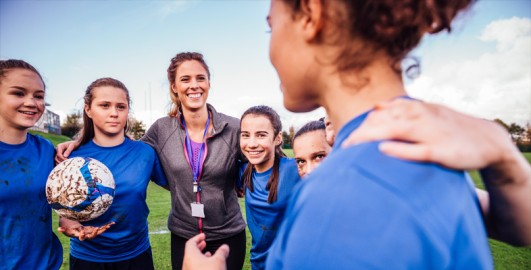1 The sports environment
The mental health of athletes has become an increasingly prominent topic in recent years, both in elite sport performance environments as well as grassroots and recreational participation. However, the role of neurodivergence is largely absent in this discourse, from the perspectives of both the athlete and the coach. One factor that can impact an athlete’s mental health is the environment in which sport is conducted. In particular, for neurodiverse athletes the physical sporting environment can sometimes offer more protective factors, or conversely individuals can be exposed to factors that require increased effort and stress to maintain performance and participation. The next activity considers the physical environments in which sport and exercise takes place and the impact that may have on a neurodivergent athlete.
Activity 1 Experiences of autism
Watch the clip below of Chris Packham, a television presenter and naturalist in the UK, describing his experiences of autism. You will watch the clip in two halves, with a different question to reflect on for each.
Demystifying autism and overstimulation
- Watch the clip from the start and pause at 2 minutes 46 seconds. While watching, consider how the experiences described by Chris and Dr Luke Bearden arise from a deficit perspective and how this may result in the negative impacts being described. Can you think of any examples where this experience of autism may be seen in a coaching environment? This could be the facility, the changing rooms, or even the temperature of the environment.
- Now watch the clip from 2:46 to the end. While watching this section, think about how Chris’s experiences may demonstrate looking at his autism from a strengths-based perspective, giving him a greater sense of ‘joy’ from his sensory experiences. Can you think of any examples where this element of autism may be encouraged in a coaching environment?
Discussion
- For these questions you may have thought about some experiences from your own participation in sport, your own coaching experiences, or maybe just thinking about an athlete you are familiar with. Thinking about these experiences from an autistic perspective can help us consider how neurotypical athletes may be able to ‘filter’ out sensory cues in a coaching environment. However, an autistic athlete may experience this same environment as overwhelming and harder to manage, for example due to different teams being coached on the same rugby pitch, or a small indoor facility with lots of lights, echoes and changes in sounds.
- The second clip may have made you think about Lucy Bronze’s story in this week’s introduction, where she refers to ‘hyperfocus’ and this being a positive component of her autism. You may also have thought about things like an athlete finding joy in playing outside, in the order of patterns of play in a team sport, or even in a similar way to Chris just enjoying running in nature.
The next section will help you explore in more detail how athletes can experience the same sporting environments very differently, reinforcing the importance of individuality in coaching practice.

